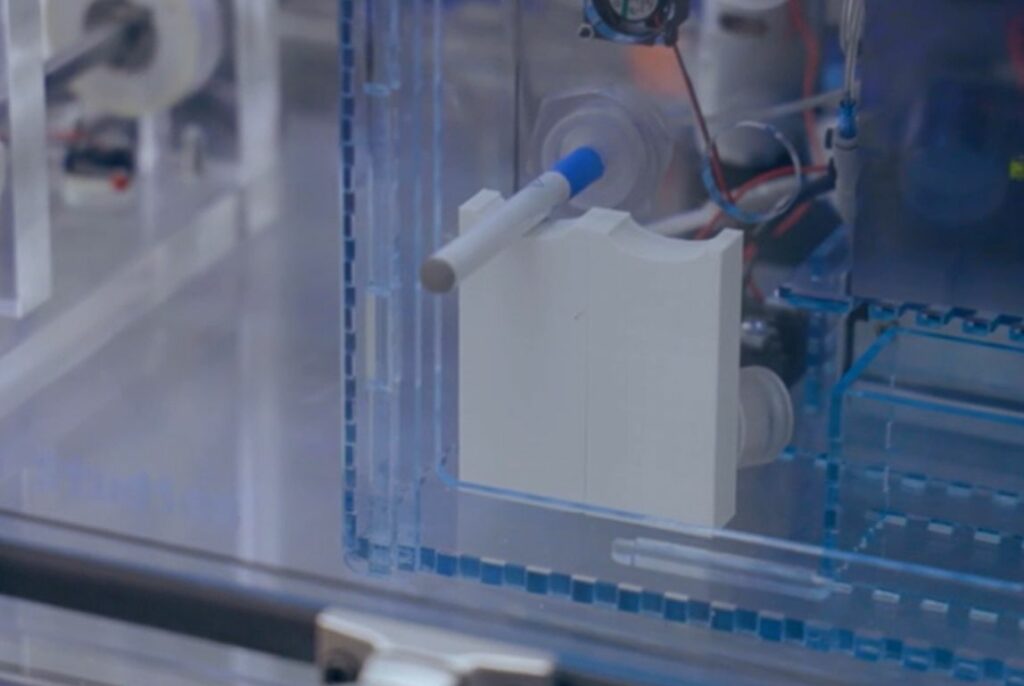A better, safer choice for someone seeking to give up smoking traditional tobacco products may be switching to e-cigarettes. But, it’s crucial to fully understand the advantages and disadvantages of e-cigarettes before using them.
In a report published today in Respiratory Research, researchers from the University of Pittsburgh have found that the addition of mint flavor to e-cigarette liquids can increase the production of vapor particles and lead to decreased lung function in smokers. This highlights the potential risks associated with flavored e-cigarettes and their impact on respiratory health.
The study utilized a unique robotic system that replicates human breathing and vaping patterns to demonstrate that commercially available e-cigarette liquids that contain menthol produce a higher quantity of hazardous microparticles compared to those that are menthol-free.
Further, an analysis of patient records from a group of e-cigarette users revealed that those who vape with menthol flavoring exhibited reduced lung function and took shallower breaths compared to non-menthol users, regardless of factors such as age, gender, race, and smoking history or usage of vaping products containing nicotine or cannabis.
“Many people, especially youth, erroneously assume that vaping is safe, but even nicotine-free vaping mixtures contain many compounds that can potentially damage the lungs,” warns senior author Kambez H. Benam.
“Just because something is safe to consume as food,” the author adds, “does not mean that it’s safe to inhale.”
In order to dissuade young people from vaping and prevent unnecessary fatalities, the U.S. Food and Drug Administration is urging tobacco companies to remove menthol from combustible tobacco products like cigarettes and cigars. However, the global market for vaping products is still expanding, and mint and menthol flavors remain extremely popular among the 2.5 million youths who reportedly used e-cigarettes in 2022.
Given that conventional toxicity testing techniques, such as animal testing or cell cultures grown on flat surfaces, can take several weeks or even months to produce reliable and clinically relevant data, regulatory agencies are struggling to keep up with testing the safety of vaping products in a timely manner.
Conventional methods of testing the safety and biological impact of aerosolized products have additional constraints. Mice and rats, which are commonly employed to assess such products, possess nasal passages with distinct anatomy compared to humans, which prohibits them from inhaling actively through the mouth in the same manner as smoking a cigarette. Moreover, the cell cultures utilized for toxicity testing are either exposed to e-liquids directly on contact or exposed to unceasing aerosols that do not reflect human breathing patterns.
In an effort to enhance the preclinical testing of the impact of vaping liquids and flavorings on vapor composition and its health outcomes, the team designed a biologically-inspired “vaping robot.”

This machine can mimic the precise temperature, humidity, puff volume, and duration, and recreate the pattern of both healthy and impaired breathing, providing a reliable method for predicting lung toxicity related to e-cigarettes.
The system developed by the researchers can determine the size and quantity of the aerosolized particles generated, and assess how these parameters fluctuate depending on the composition of the liquid. The effects of these aerosols can be rapidly evaluated using “lung-on-chip” devices that have been engineered for this purpose, thereby producing high-quality data that can be utilized to infer potential toxicity.

In prior studies, Benam and his team discovered that vitamin E acetate, a common additive present in e-cigarette liquids containing cannabinoids, generates a higher quantity of hazardous small particles that can penetrate deep into the lungs and lodge themselves in the narrowest airways, as well as the walls of the trachea and bronchus.
Though further large-scale clinical research is necessary, the analysis indicates that menthol additives might pose a similar level of risk as vitamin E acetate, which has been strongly associated with lung injury in individuals who use e-cigarettes and vaping devices.
Benam stated that the primary message they wish to convey, particularly to young adults who have not smoked before, is that “switching to e-cigarettes may be a better, safer alternative for someone who is trying to quit smoking regular tobacco products.
“But it’s important to have full knowledge of e-cigarettes’ risks and benefits before trying them.”
Image Credit: Marijan Murat/picture alliance via Getty Images
